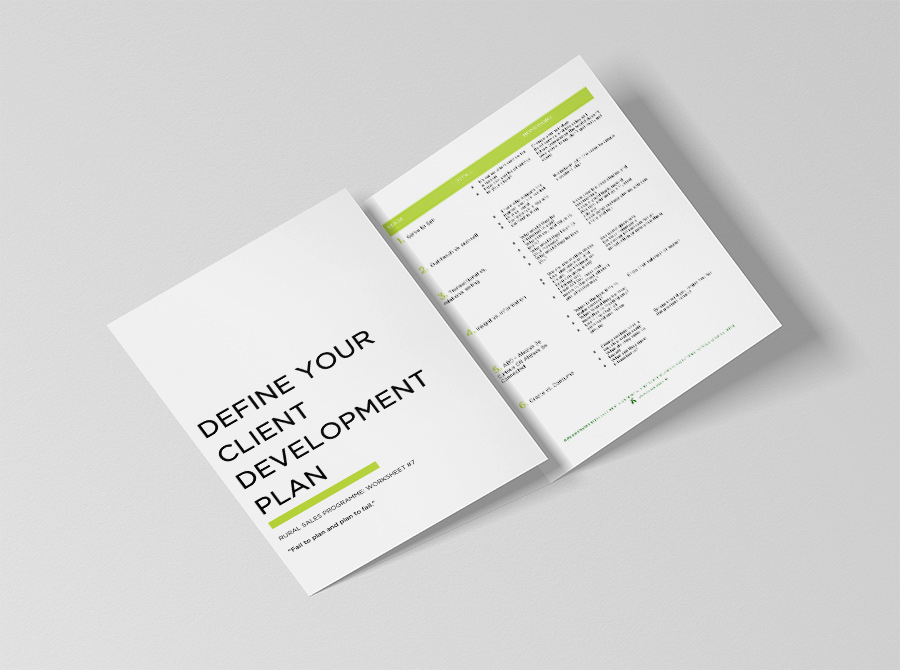How To Properly Qualify Your Rural Sales Pipeline
Accurate sales forecasts are key in this business climate.
Accuracy allows you to make good, informed business decisions about where and what you need to spend when.
Without a solid sense of what sales are coming in when, it can cause chaos on your company’s cashflow.
There is nothing worse than all predicted sales stacking up every quarter to then be pushed back to the end of the financial year, to then not come through.
So what can you do to properly qualify your rural sales pipeline to ensure you have more confidence, clarity and conviction in it?
Plenty. Here’s five tips to help ensure your pipeline keeps pulsing:
1. Pipeline management needs a master
Make someone who is independent of the sales person – the ones who often have “happy ears” filling a pipeline with poorly qualified prospects.
As humans we are conditioned to see things in the most positive light, what we call overconfidence bias because we have a vested interest and investment in a favourable outcome.
Appointing someone who sits outside the sale inserts some independence into the qualifying process. The sales person has to properly qualify their prospect to the pipeline master which in turn properly qualifies the deal because it removes all the obvious bias of self-reporting.
2. Properly qualify your prospects
It’s sales conversations, not presentations, that matter most.
This is why we stress such importance on role plays and rehearsals with the rural sales teams we teach and train.
You can’t properly qualify your pipeline until you have properly qualified your prospects.
You need to be asking the right questions to get the right answers so you can properly qualify prospects including what we, and Toyota Corporation, call the 5 Whys:
- “why did you reach out/agree to meet with me?”
- “why now?”
- “why not later?”
- “why us?/why do you think we’re the right provider for this job?”
- “why don’t you do this in house/use another provider/cheaper provider?”
This way you get to the root cause rather than stay at the superficial surface where you get easily pulled in and persuaded to thinking you have a prospect, when in fact what you actually have is a suspect.
You will know now and earlier whether this prospect is more likely to buy. If you need a no, it’s better to get a no now rather than later.
That way you can move onto the next prospect and stop wasting time on the wrong ones.
The single best way to increase sales is to spend more time with better prospects.
3. Use a pre-proposal in your sales process
You can spend a ton of time on your proposals or you could invest less in what we call a pre-proposal.
The purpose of a pre-proposal is to better qualify if your prospect is likely to buy.
A pre-proposal summarises the sales conversation you have had and represents a safety stop for vendor and buyer.
By reflecting back exactly what they told you and what you agreed, you can quickly find out if they are at a “go or no go” state. If they are then you can justify the time spent in the full proposal, if not you don’t.
4. Put a probability factor on each prospect
Your CRM may allow you to add a number of weighted criteria to gives you a combined probability factor on each prospect.
If it doesn’t you can do it manually instead using the following criteria:
- did they approach us or did we approach them? (tip: give them a score 50% higher if it was the former)
- did they talk about details of the deal? (if they did it shows they are seriously considering all the details)
- did they talk about timing? (if they show urgency it is a strong buying signal)
- did they talk about perceived risks?
- did they talk about access to the economic buyer?
When prospects mention these things they are serious prospects. If they didn’t they are not.
Remember too a CRM is not the silver bullet to all your prospecting.
5. Paint your ideal customer profile
Does this pipeline prospect match the same traits and attributes of your ideal customer?
If you haven’t committed to the process of painting your own ideal customer profile – do it now.
Look for the patterns amongst your current customers.
The traits and attributes you’re looking to match against your current customers are things like: job title, age, tenure, interests, key words/language, previous providers, persona, background, budget and belief systems.
If you can make a match you are much more likely to be in business.
+++
I hope this list helps you better qualify the prospects in your sales pipeline because it’s more important than ever to get it right now in rural as we may all face a rough road ahead.
Effective prospecting always requires effective qualifying. You can’t have one without the other.
Processes are always there to protect you so the more you use ones like these, the more certain your sales pipeline will become.





